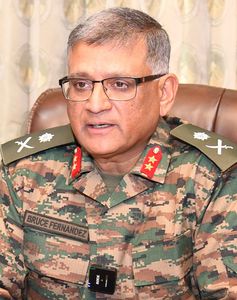Interview/ Major General Bruce Fernandez, Commandant, High Altitude Warfare School
Q/ How do you plan to augment the training of the armed forces in mountain warfare?
A/ HAWS (High Altitude Warfare School) has been at the forefront of all military training related to high altitude and mountain warfare for the Army. We have a rich history of participating in all the wars the Indian Army has fought post-independence, directly or by carrying out training at those critical junctures. Given the challenges on our borders, we have refined our training pedagogy, methodology and capacity. We are currently in the process of upgrading our capacity to meet our requirement of trained ‘mountain warriors’.
Q/ Does war in the mountains remain a high probability?
A/ A country’s geography remains the same, so the Himalayas will never go away. To say that mountain warfare will become irrelevant is a shallow view.
Q/ What are the exclusive training components at HAWS?
A/ We are a very geography-specific institution. We train in high-altitude and mountain warfare. Therefore, the focus is on training our personnel on tactics, techniques and procedures for fighting in such terrain. Our training includes specialised techniques like fixing ropes, climbing ropes, cliff assaults and negotiating avalanche prone areas, ice walls, ice fields and glaciers.
Q/ How successful has India been in dominating the Himalayan heights?
A/ We have been very successful. We have been at Siachen since 1984. In high altitude areas, challenges posed by weather, ice fields, glaciers and avalanches exist. Steep cliffs, rocky knobs, boulders and huge rock faces need to be negotiated and climbed to maintain dominance over our adversaries. At HAWS, we prepare the Indian Army to ensure that we remain successful in the Himalayas.
Q/ What is your vision for HAWS?
A/ We are in the process of restructuring our curriculum and training. We plan to introduce certain aspects into the curriculum that will empower those who come here―not only to acquire mountaineering skills but also to develop leadership qualities at junior levels. This leadership will provide the confidence to operate in small groups. Today’s wars are about operating in smaller groups because of the high transparency and visibility afforded by technology, such as satellites, radars and computer systems. As a result, we are focusing on empowering the junior leadership to also be decision-makers at the tactical level, as they will most often be in situations where they would need to decide and act. This will enable our forces to operate with more independence and adaptability.
Q/ For the first time, HAWS is also training women. How do you see their role growing in mountain warfare?
A/ This is a positive change, in the larger evolutionary process of inducting women into the Army. We have seen them reach positions where they command units. The process took time to evolve, but women are now leading, and they have the same opportunities as their male counterparts. The women training with us will, in future, be deployed in situations requiring mountain warfare skills. It is, therefore, crucial that they are exposed to this training, as they, too, may have to climb cliffs or navigate difficult terrain. The training ensures that they have the skill sets required for operations, regardless of the service they belong to, whether it is engineers, signals or air defence. We want them to be fully integrated and be prepared to take on responsibilities like their male counterparts.
Also Read
- THE WEEK goes to Machoi Glacier where India trains its soldiers to guard its crucial heights
- 'India has advantage in high altitude combat': Lieutenant General S.L. Narasimhan (retd)
- How mountaineering expeditions play crucial role in mountain warfare training
- 'India is preparing for a two-and-a-half-front war': Radha Krishna Mathur
Q/ You recently led an operation braving avalanches to recover fallen soldiers.
A/ When you do military training, casualties are inevitable. While we train to prevent them, we can never predict what will happen when dealing with nature. We train to deal with such situations, though survival is not always guaranteed. As for the operation, it was done primarily to provide closure to the families. For us, it was an emotive issue, as we are trained never to leave our fallen ones behind. The operation carried risks, but our brotherhood is strong. Therefore, we are always willing to take those risks. We prepared and trained to ensure the mission’s success. It was carried out at 18,000 feet, in difficult weather conditions. We prepared for 7-8 months adopting new techniques, like use of chainsaws as an alternative to digging, use of radars to locate, high quality equipment supported by redundancy in logistics. After the recovery, there was a tremendous sense of fulfilment among everyone involved.
Q/ How do you compare HAWS with other mountain forces of militaries around the world?
A/ Our geography is unique. The challenges in Nordic countries and North and South America are different. While they also face snow, wind chill factors and high-altitude training, their terrain is at much lower altitudes and is less jagged and rugged. The differences in terrain and altitude make our training slightly different. However, we constantly exchange best practices and send personnel to each other’s training establishment, like in France, Italy, the US and Uzbekistan. We also conduct joint exercises, subject-matter discussions and expert exchanges.



